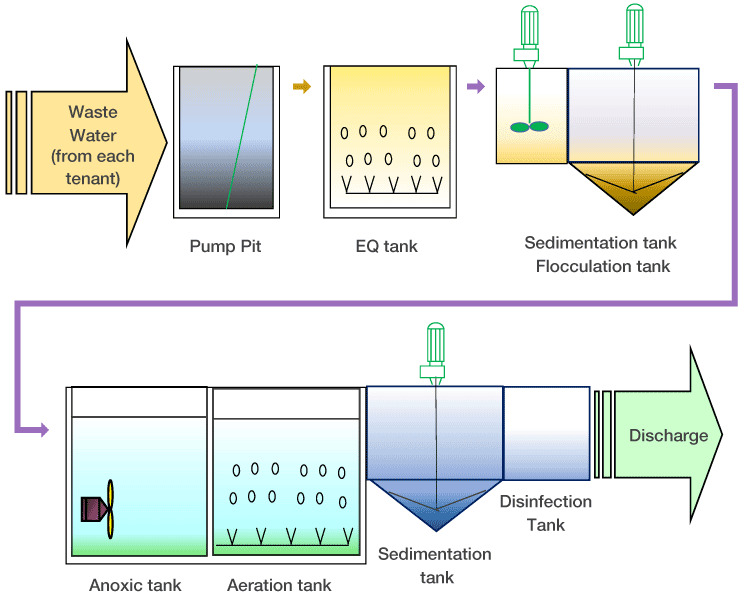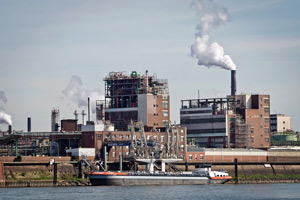Industrial Waste Water Treatment-- Lasting Solutions for Industrial Water Monitoring
Industrial Waste Water Treatment-- Lasting Solutions for Industrial Water Monitoring
Blog Article
Innovations and Breakthroughs in Industrial Waste Water Therapy Technologies
The landscape of commercial wastewater therapy is going through a transformative change, driven by advancements that boost both efficiency and sustainability. As regulatory standards evolve, the integration of AI and device knowing into wastewater administration systems guarantees to guarantee and improve operations compliance.
Overview of Drainage Therapy Technologies
Wastewater therapy innovations include a variety of methods designed to get rid of impurities from commercial effluents before their release right into the atmosphere. These innovations are vital for maintaining ecological equilibrium and making sure compliance with ecological guidelines. The main categories of wastewater therapy consist of physical, chemical, and biological approaches, each offering distinct purposes based upon the nature of the pollutants present.

Organic therapy methods employ bacteria to weaken natural matter, making them particularly efficient for organic-rich effluents. Strategies like turned on sludge and biofilm activators harness the natural degradation abilities of germs, causing substantial decreases in biochemical oxygen need (BOD)
Advanced Filtration Techniques
Advanced filtering methods represent an important advancement in the world of commercial wastewater therapy, boosting the performance of impurity elimination procedures. Industrial Waste Water Treatment. These approaches incorporate a series of modern technologies, consisting of microfiltration, ultrafiltration, nanofiltration, and turn around osmosis, which supply consecutive obstacles for different bit sizes and chemical structures
Microfiltration and ultrafiltration utilize membrane layer systems to get rid of put on hold solids, germs, and larger organic molecules, boosting the top quality of effluent before additional treatment. Nanofiltration bridges the gap in between ultrafiltration and turn around osmosis, successfully eliminating divalent ions and organic substances, hence lowering the tons on downstream processes.
Reverse osmosis offers the highest degree of purification by allowing just water and little molecules to go through its semi-permeable membrane layers, making it suitable for recovering top quality water from industrial effluents. Current developments in membrane innovation, including the growth of even more fouling-resistant and sturdy products, have dramatically enhanced functional effectiveness and decreased prices.
Including these innovative purification strategies not just improves the overall therapy process yet additionally contributes to sustainability initiatives by allowing water reuse and source healing in commercial settings. (Industrial Waste Water Treatment)
Organic Treatment Technologies

Furthermore, the growth of engineered biological systems, such as membrane layer bioreactors (MBRs), integrates organic therapy with advanced membrane layer filtering. This integration enables higher effluent top quality and decreased impact, making it appropriate for space-constrained industrial centers. Innovations in genetically crafted microorganisms have actually also arised, improving the biodegradation of details pollutants, such as drugs and heavy steels, that are typically testing to remove.
In addition, the implementation of bioaugmentation approaches, where useful germs are introduced to boost the existing biological treatment procedures, has shown encouraging lead to enhancing therapy performance. These advancements collectively represent a fad towards more efficient and lasting organic treatment approaches that can adjust to the evolving complexities of get more industrial wastewater streams. As sectors remain to focus on ecological conformity, these biological developments will certainly play a critical role in wastewater administration.

Source Healing Methods
In commercial settings, the assimilation of resource recuperation techniques has actually ended up being increasingly essential for improving sustainability and decreasing waste. These techniques concentrate on drawing out valuable products and energy from wastewater streams, consequently transforming prospective pollutants into multiple-use resources.
One noticeable method is vitamins and mineral recovery, where nitrogen and phosphorus, usually present over in wastewater, are captured and exchanged fertilizers. This not only lowers environmental effects but likewise gives a circular economic climate remedy for agricultural click site applications. In addition, modern technologies such as anaerobic digestion enable the conversion of natural waste right into biogas, a renewable resource resource that can offset fossil fuel usage in commercial procedures.
Additionally, advanced purification and membrane layer technologies help with the healing of commercial by-products such as metals and salts. These recuperated products can be rehabilitated right into manufacturing processes, reducing the requirement for virgin resources.
Future Patterns in Drainage Monitoring
As sectors increasingly prioritize sustainability, the future of wastewater management is set to undergo considerable improvements. Technical innovations, such as fabricated knowledge and artificial intelligence, will enable more efficient monitoring and management of wastewater systems. These technologies can predict maintenance demands, maximize therapy procedures, and improve decision-making, eventually minimizing operational expenses and environmental impact.
Moreover, the assimilation of round economic situation concepts will play an important role in wastewater management. Industries are anticipated to change towards systems that not only deal with wastewater yet likewise recuperate valuable sources, such as nutrients, water, and power. This shift will decrease waste and advertise the reuse of materials, aligning with international sustainability goals.
Emerging therapy methods, such as membrane bioreactors and progressed oxidation processes, will better improve the efficiency of wastewater therapy, permitting better effluents appropriate for reuse. Additionally, governing frameworks are most likely to progress, emphasizing more stringent requirements for wastewater discharge and motivating markets to adopt ingenious treatment remedies.
Final Thought
To conclude, read here the development of commercial wastewater treatment modern technologies demonstrates a significant shift in the direction of improved performance and sustainability. Developments in innovative filtering strategies, biological therapies, and source healing approaches highlight the industry's dedication to ecological stewardship. The combination of fabricated intelligence and maker learning additionally maximizes these processes, making sure governing compliance and promoting a round economy. Continued improvements in these locations will play an important duty fit the future of wastewater administration and securing vital water resources.
The landscape of industrial wastewater treatment is going through a transformative shift, driven by developments that improve both effectiveness and sustainability.Wastewater therapy innovations include an array of approaches created to get rid of impurities from commercial effluents prior to their release into the atmosphere.Utilizing the power of biological processes has led to substantial technologies in the therapy of commercial wastewater.Furthermore, the application of bioaugmentation techniques, where useful microorganisms are introduced to enhance the existing organic therapy processes, has revealed encouraging outcomes in enhancing treatment efficiency. These technologies jointly represent a trend in the direction of even more reliable and lasting biological therapy methods that can adapt to the evolving intricacies of commercial wastewater streams.
Report this page